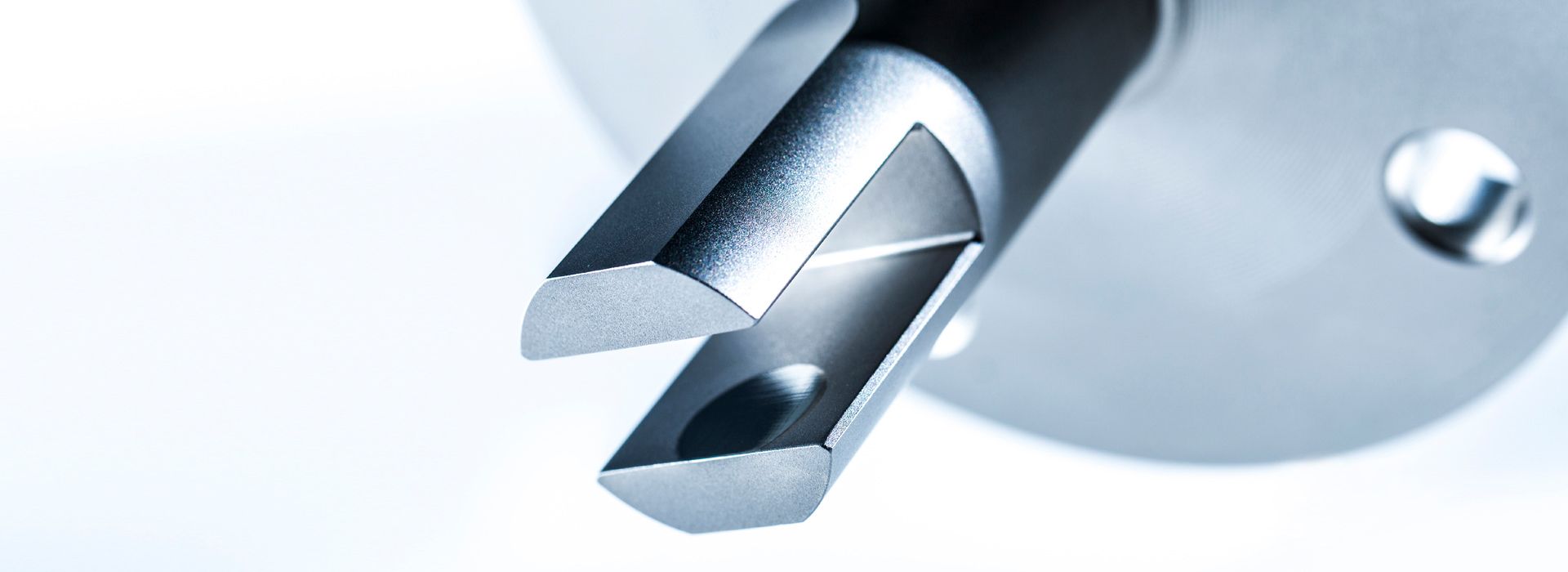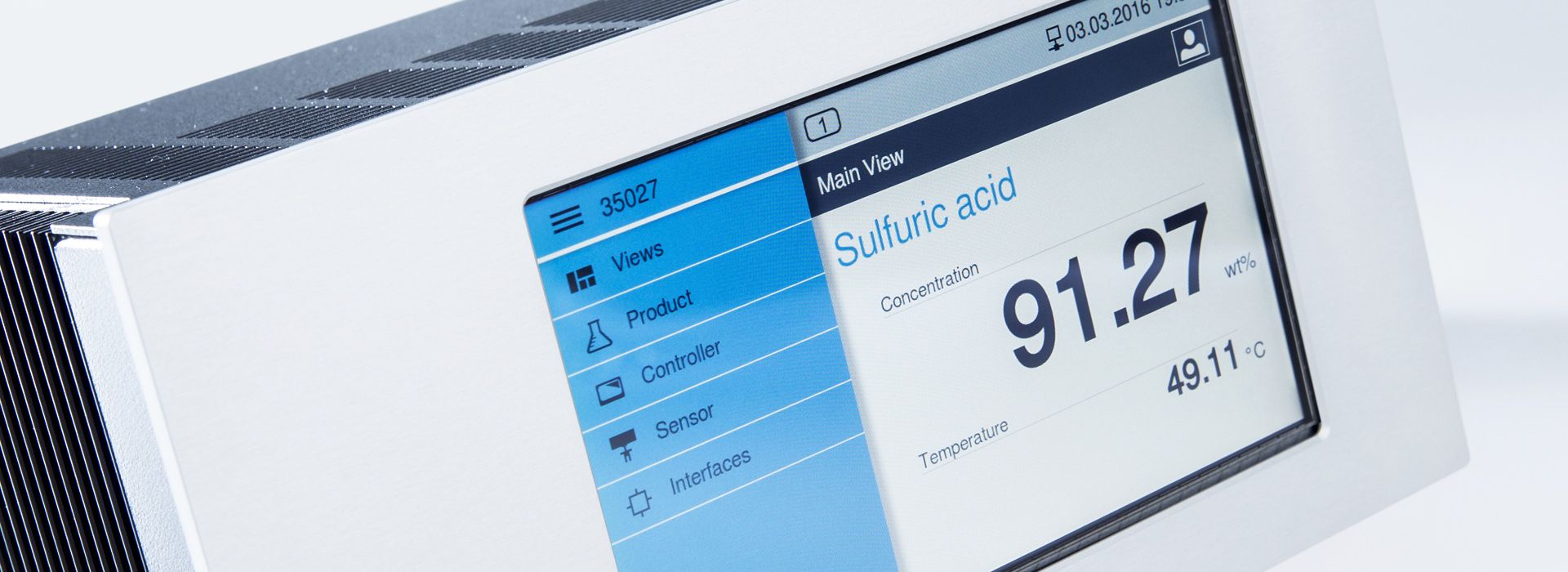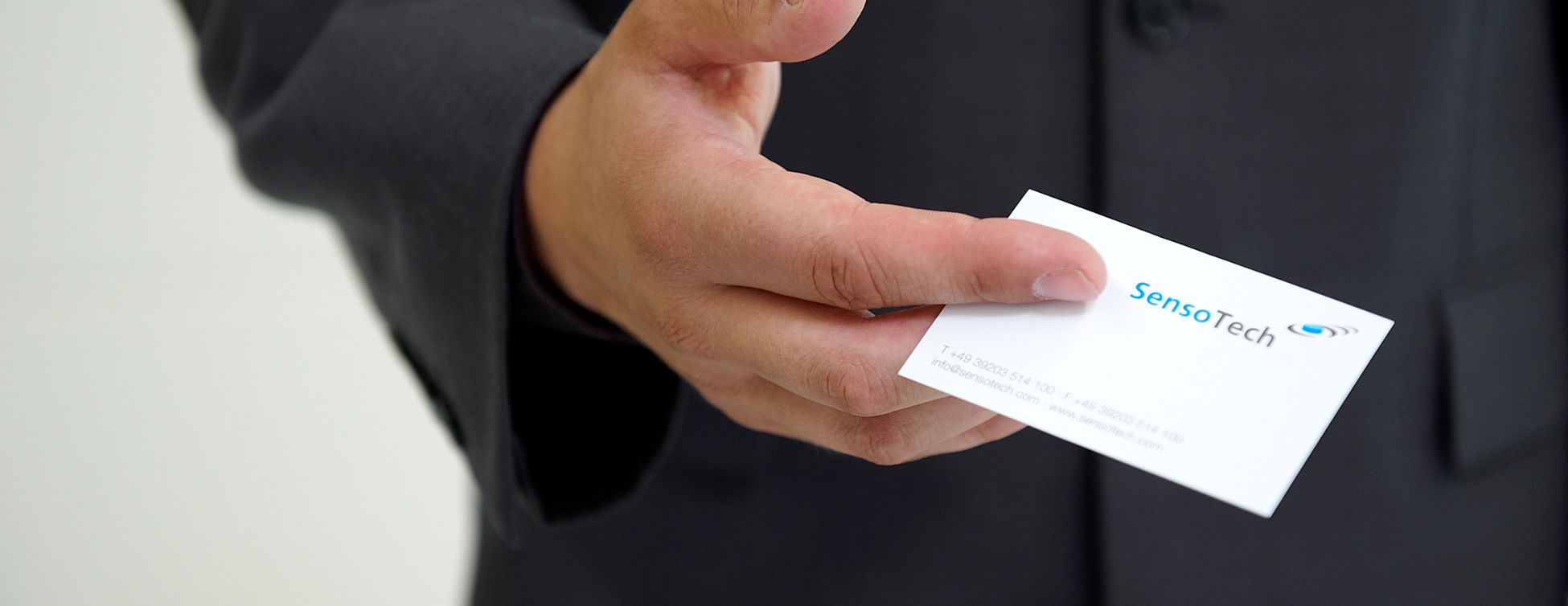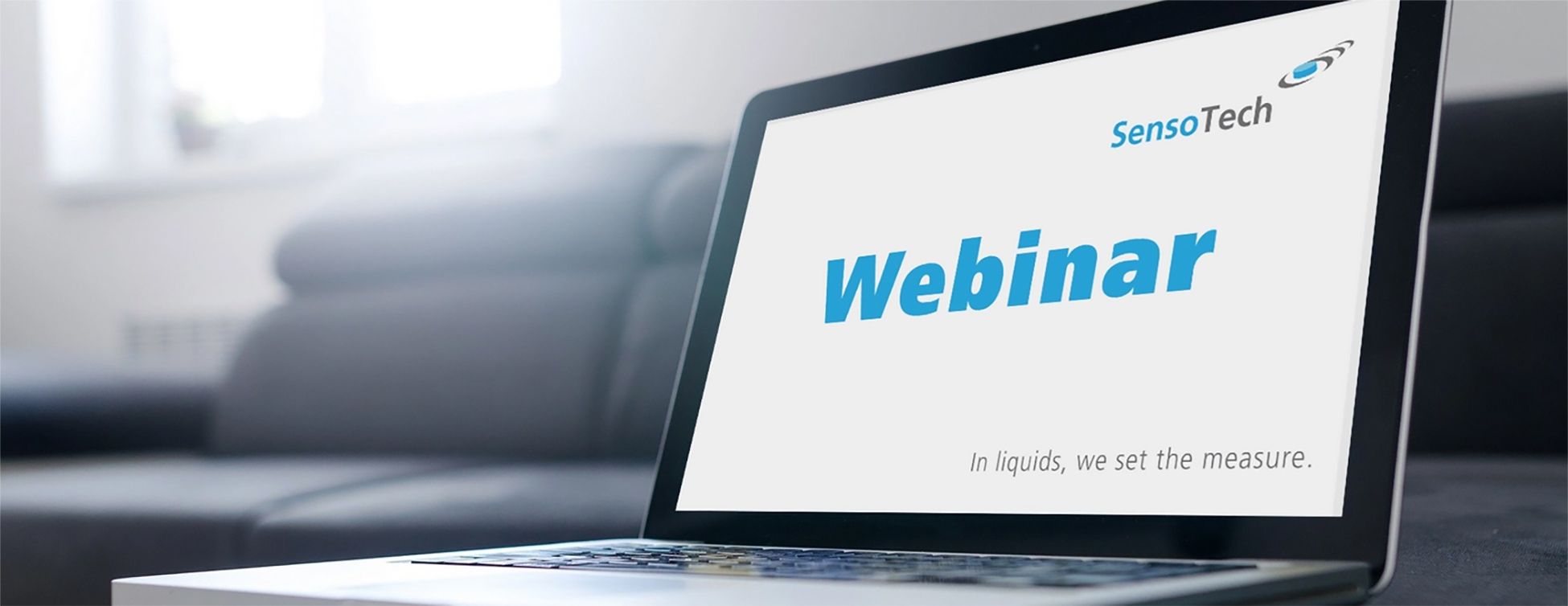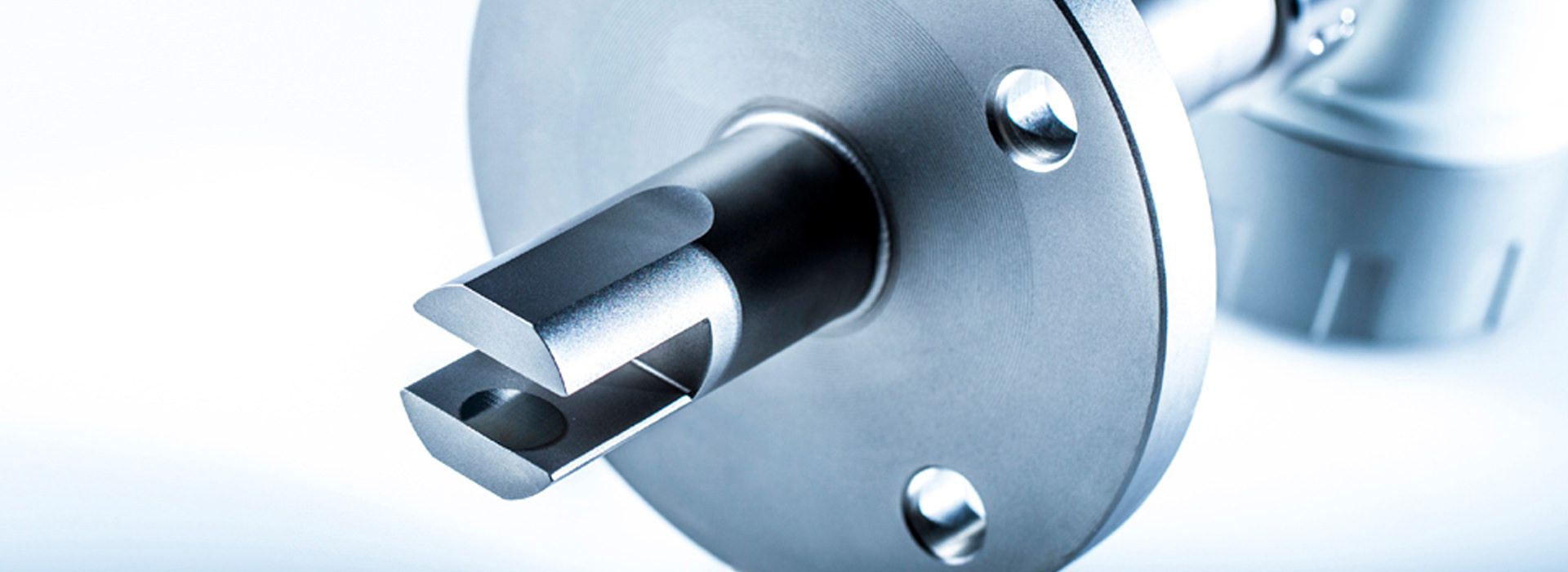Concentration measurement in liquids
Concentration measurement explained
In the essential task of concentration measurement in liquids, the industry uses advanced products that guarantee the precision and efficiency of analysis processes. Understanding the exact composition of a solution (whether in pharmaceutical manufacturing, food technology, or chemical processing) is enabled by advanced sensor technology, which, based on refractometric, potentiometric, or spectroscopic principles, allows accurate detection of theconcentration.
These products, equipped with intelligent interfaces for data transmission and evaluation, offer the possibility to optimize processes with low maintenance and long service life, thus providing an indispensable resource in quality control and process management.
The ultrasonic measurement method of LiquiSonic
The basis of the measurement method is a time measurement that can be realized very accurately and with long-term stability. From the speed of sound, the concentration or density of a liquid is calculated. Other parameters can also be determined, such as Brix content, solid content, dry mass, or suspension density.
Our LiquiSonic® Concentration and density measuring devices are used in various processes for the analysis of liquids.
Typically, a calibration curve is determined from the relationship between the speed of sound and concentration. Based on this, the corresponding concentration is calculated from each measured speed of sound value.

Concentration setting
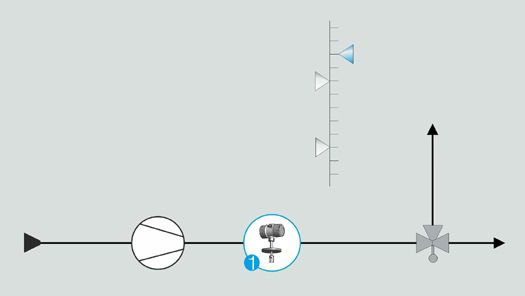
Limit monitoring
Our ultrasonic measuring devices have no mechanical parts that can wear out or age. They offer outstanding advantages over competing measurement methods for determining concentration and density.
High reliability in determining the molar concentration
The measurement method only requires a precise time measurement to determine the molar concentration. From the sound travel time and the known distance between transmitter and receiver, the speed of sound is calculated. The typical sensor design includes transmitter and receiver in a compact housing.
The measurement method is independent of the conductivity, color, and transparency of the liquid due to the sensors and is characterized by high reliability in determining the molar concentration. The measurement accuracy of the devices is between 0.05 m% and 0.1 m%. In addition to sound speed measurement, all LiquiSonic® Sensors via an integrated measurement of temperature for temperature compensation in the process.
Basics of Concentration Measurement
The determination of the concentration of various liquids plays a crucial role in numerous procedures of different processes. The ratio of two substances to each other in a mixture or solution is measured and evaluated.
A central factor in this concentration measurement is the molar concentration. It is defined as the amount of a substance per unit volume and is particularly crucial in the analysis of solutions. It allows for an accurate assessment of the chemical composition and reactivity. Thus, molar concentration becomes an indispensable tool in many areas.
Moreover, there are various measurement ranges that allow for the molar concentration to be measured in different ways. They significantly expand the possibilities of concentration measurement and increase flexibility concerning the specific requirements of the mixture or solution to be analyzed.
Finally, the amount of liquid to be analyzed plays an important role. It must be sufficient to allow for an accurate measurement but not so large that it distorts the measurement result or makes the measurement unnecessarily complicated.
An important aspect of concentration measurement is the amount of substance concentration (molarity) in a solution, which is defined as the amount of a substance per unit volume. This is particularly relevant in the analysis of a solution, where the amount of substance concentration is crucial for assessing the chemical composition, concentrations, and reactivity. The precise measurement of concentrations of an amount of substance in a solution is essential to control processes, ensure quality, and conduct scientificresearch.
Applications of concentration measurements
Concentration measurement is one of the essential methods for analyzing the quality and safety-relevant characteristics of products and substances. Thus, it plays a crucial role in several industries. There are various methods for measuring the concentration of a substance in a solution, depending on the type of substance and the application requirements.
A practical example of the application of concentration measurement can be found in the pharmaceutical industry: Here, the precise determination of the concentration of an active ingredient in medications is essential to ensure their effectiveness and safety. This demonstrates the importance of precise measurement methods for determining substance concentration in quality assurance.
Examples of measuring substance concentration
Concentration detection is used, for example, in the following areas:
- Chemistry/ Chemical Production (For monitoring the composition of mixtures)
- Pharmaceutical industry (e.g., for the production of pharmaceuticals)
- Food production (For controlling the product quality of food)
- Metallurgy (To check the quality of metal ores)
- Environmental analysis (For calculating pollutants in water)
In addition, concentration measurement is also commonly used in other areas, such as within industry and science.
Methods of concentration measurement
The precise determination of the substance concentration in liquids is crucial for numerous scientific, industrial, and medical applications. Various methods of concentration measurement are used to quantify the exact content of a substance in a specific volume of liquid.
These methods range from spectrophotometric techniques to chromatographic analyses and electrochemical measurements. The choice of the appropriate method depends on the properties of the substance to be analyzed, the requirements of the respective application, and the available resources. Various methods exist for measuring the concentration of solutions. Each of these measurement methods for determining substance concentration has its own advantages and disadvantages.
Refractometry
The refractometer determines the refractive index of solutions and solids to measure concentration. The determination of the refractive index is based on the refraction of light, which is reflected or refracted by a liquid. Depending on the type and concentration of the dissolved substances, the light is refracted differently.
Consequently, the refractive index results from the concentration of the dissolved substances. An optical sensor (window) measures the reflection of a light beam, which is reflected by an LED light source after hitting the sample. The refractometry process is extremely sensitive to influencing factors such as vibrations and requires extremely extensive and time-consuming calibration as well as regular maintenance.
Radiometry
Radiometry uses radioactive radiation to detect concentrations of a substance. A radioactive preparation sends its radiation through the measurement container, which is received by the detector. A scintillator converts the radioactive radiation into light flashes and evaluates their number. Since the penetration of gamma radiation depends on the substance, the density of the mass is determined from the intensity of the incoming radiation.
Gravimetry
In gravimetry, the measurement of mass concentration is carried out by measuring the mass of a substance before and after a chemical reaction. It is used to determine the concentration of a specific element or compound in a sample. The basic process for determining the amount of substance concentration includes the steps of precipitation, filtration, and weighing. This method is extremely time-consuming and typically requires large samples. Furthermore, the measurement principle is very prone to errors as it requires several manual process steps in defining the amount of substance concentration.
Titration
The concentration measurement by titration is carried out by adding a solution with a known concentration value to a solution with an unknown concentration value until a chemical reaction occurs. This method is only suitable for certain solutions and due to manual handling prone to errors in calculating mass concentration.
spectrophotometry for concentration measurement
In spectrophotometry, the volume of the sample plays a crucial role in determining the volume concentration of a substance. Volume concentration is a unit of measure for the amount of a substance in a mixture relative to the total volume of the mixture. It indicates what portion of the total volume of a mixture consists of a particular substance.
Light absorption, which is a central measurement in this process, can be significantly influenced by the volume of the sample. Therefore, accurate determination and control of the sample volume are essential for precise measurement results. Spectrophotometry is suitable for a variety of samples, including liquids, gases, and solid materials.
This variant for measuring particle volumes is very susceptible to interference factors, which affect the accuracy of the sample.
Chromatography (such as HPLC, GC)
Chromatography separates components of a mixture based on their interactions with a stationary and a mobile phase.
There are also other measurement methods/procedures that can be used for concentration measurement in certain scenarios. These include:
- Electrochemical methods (such as potentiometry, ion-selective electrodes)
- pH measurement
- NMR spectroscopy
- mass spectrometry
Selection criteria for concentration measurement methods
The selection of a suitable method for concentration measurement in liquids depends on several factors, including:
- Specificity of application: The type of substances to be measured and the complexity of the solution.
- Accuracy and sensitivity: Required precision and ability to detect a minimum of concentrations.
- Speed and throughput: Need for quick measurement results and ability to handle large sample volumes.
- Cost efficiency: Acquisition and operating costs of the equipment as well as maintenance requirements.
- User-friendliness: Ease of operation and maintenance, especially in environments with little specialized personnel.
Density and speed of sound of some liquids
| Liquid | Chemical formula | T [°C] |
| v [m/s] | |
| Acetal | Carbon Hydrogen3Carbon Hydrogen(OC2H5)2 | 24 | 1.03 | 1378 | |
| Acetate vinegar ester | Carbon Hydrogen4 CO.Carbon Hydrogen4 Carboxylic Acid2H5 | 25 | 1.021 | 1417 | |
| Acetone | Carbon Hydrogen3CO.Carbon Hydrogen3 | 20 | 0.7992 | 1192 | |
| Acetone dicarboxylic acid | C.(Carbon Hydrogen2COOxygen Carbon2H5)2 | 22 | 1.085 | 1348 | |
| diethyl ester | |||||
| Acetonitrile | Carbon Hydrogen3CN | 20 | 0.783 | 1304 | |
| Acetonylacetone | C6H10O2 | 20 | 0.971 | 1416 | |
| Acetophenone | C6H5.CO.Carbon Hydrogen3 | 20 | 1.026 | 1496 | |
| Acetylacetone | C5H8O2 | 20 | 0.97 | 1383 | |
| Acetyl chloride | C2H3Oxygen Carbonl | 20 | 1.103 | 1060 | |
| Acetylene dichloride (cis) | CHydrochloric Acid = CHydrochloric Acid | 25 | 1.262 | 1025 | |
| Acetylene tetrabromide | CHBr2. CHBr2 | 20 | 2.963 | 1041 | |
| Acetylene tetrachloride | CHydrochloric Acid2.CHydrochloric Acid2 | 28 | 1,578 | 1155 | |
| Acrolein | C3H4O | 20 | 0.841 | 1207 | |
| Adipic acid diethyl ester | Carbon Hydrogen2.Carbon Hydrogen2.COOxygen Carbon2H5 | 22 | 1.013 | 1376 | |
| | | |||||
| Carbon Hydrogen°2Carbon Hydrogen2.COOxygen Carbon2H5 | |||||
| Adipic acid dimethyl ester | Carbon Hydrogen2Carbon Hydrogen2COMethoxy3 | 22 | 1.067 | 1469 | |
| | | |||||
| Carbon Hydrogen2Carbon Hydrogen2COMethoxy3 | |||||
| Ammonium nitrate 10% | NH4Nitric Oxide3 | 20 | 1540 | ||
| Allyl chloride | Carbon Hydrogen2Carbon Hydrogen . Carbon Hydrogen2CChlorine | 28 | 0.937 | 1088 | |
| Formic acid | HCarboxylic Acid | 20 | 1.212 | 1287 | |
| Amyl ether (iso) | C5H11Oxygen Carbon5H11 | 26 | 0.774 | 1153 | |
| Amyl alcohol (n) | C5H11Hydroxide | 20 | 0.816 | 1294 | |
| Amyl alcohol (tert.) | (Carbon Hydrogen3)2C(Hydroxide)C2H5 | 28 | 0.809 | 1204 | |
| Amyl acetate | Carbon Hydrogen3COOxygen Carbon5H11 | 26 | 0.875 | 1168 | |
| Amyl bromide (n) | C5H11Bromine | 20 | 1.223 | 981 | |
| Amyl formate | HCOOxygen Carbon5H11 | 26 | 0.869 | 1201 | |
| Aniline | C6H5NH2 | 20 | 1.022 | 1656 | |
| Ascorbic acid 30% | C6H8O6 | 20 | 1578 | ||
| Barium sulfide 120 g/l | BaS | 50 | 1591 | ||
| Benzaldehyde | C7H6O | 20 | 1.046 | 1479 | |
| Benzene | C6H6 | 20 | 0.878 | 1326 | |
| Benzoyl chloride | C6H5COOxygen Carbonl | 28 | 1.211 | 1318 | |
| Benzyl acetone | C10H12O | 20 | 0.989 | 1514 | |
| Benzyl alcohol | C7H7Hydroxide | 20 | 1.045 | 1540 | |
| Benzyl chloride | C7H7Chlorine | 20 | 1.098 | 1420 | |
| Succinic acid diethyl ester | (Carbon Hydrogen2-COOxygen Carbon2H5)2 | 22 | 1.039 | 1378 | |
| Boric acid 5% | H3BO3 | 30 | 1520 | ||
| Pyruvic acid | CMethoxy3Carboxylic Acid | 20 | 1.267 | 1471 | |
| Bromineomal | C2HOBromine3 | 20 | 2.55 | 966 | |
| Bromonaphthalene (a) | C10H7Bromine | 20 | 1.487 | 1372 | |
| Bromineomoform | CHBr3 | 20 | 2.89 | 928 | |
| Butyric acid | C3H7Carboxylic Acid | 20 | 0.959 | 1203 | |
| Butyl alcohol (n) | C4H9Hydroxide | 20 | 0.81 | 1268 | |
| Butyl alcohol (iso) | (Carbon Hydrogen3)2Carbon HydrogenCarbon Hydrogen2Hydroxide | 20 | 0.802 | 1222 | |
| Butyl alcohol (tert) | C4H10O | 20 | 0.789 | 1155 | |
| Butyl acetate (n) | Carbon Hydrogen3COOxygen Carbon4H9 | 26 | 0.871 | 1271 | |
| Butyl bromide (n) | Carbon Hydrogen3(Carbon Hydrogen2)2Carbon Hydrogen2Bromine | 20 | 1.275 | 990 | |
| Butyl chloride (n) | C4H9Chlorine | 20 | 0.884 | 1133 | |
| 2,3 Butylene glycol | C4H10O2 | 25 | 1.019 | 1484 | |
| Butyl formate | HCOOxygen Carbon4H9 | 24 | 0.906 | 1199 | |
| Butyl iodide (n) | Carbon Hydrogen3(Carbon Hydrogen2)2Carbon Hydrogen2J | 20 | 1.614 | 977 | |
| Butyllithium | 20 | 1390 | |||
| Caprolactam | C6H11Nitric Oxide | 120 | 1330 | ||
| Caproic acid | C5H11Carboxylic Acid | 20 | 0.929 | 1280 | |
| Caprylic acid | C7H15Carboxylic Acid | 20 | 0.91 | 1331 | |
| Carvacrol | C10H14O | 20 | 0.976 | 1475 | |
| Quinaldine | C10H9N | 20 | 1.069 | 1575 | |
| Quinoline | C9H7N | 20 | 1.093 | 1600 | |
| Chlorobenzene | C6H5Chlorine | 20 | 1.107 | 1291 | |
| Chloroacetic acid ethyl ester | Carbon Hydrogen2ClCOOxygen Carbon2H5 | 26 | 1.16 | 1234 | |
| Chloroacetic acid methyl ester | Carbon Hydrogen2ClCOMethoxy3 | 26 | 1.232 | 1331 | |
| a-Chloronaphthalene | C10H7Chlorine | 20 | 1481 | ||
| Chloroform | CHydrochloric Acid3 | 20 | 1.489 | 1005 | |
| o-Chlorotoluene | C7H7Chlorine | 20 | 1.085 | 1344 | |
| m-Chlorotoluene | C7H7Chlorine | 20 | 1.07 | 1326 | |
| p-Chlorotoluene | C7H7Chlorine | 20 | 1.066 | 1316 | |
| Cinnamaldehyde | C9H8O | 25 | 1.112 | 1554 | |
| Citral | C10H16O | 20 | 0.859 | 1442 | |
| Crotonaldehyde | C4H6O | 20 | 0.856 | 1344 | |
| Cyclohexane | C6H12 | 20 | 0.779 | 1284 | |
| Cyclohexaneol | C6H12O | 20 | 0.962 | 1493 | |
| Cyclohexanone | C6H10O | 20 | 0.949 | 1449 | |
| Cyclohexene | C6H10 | 20 | 0.811 | 1305 | |
| Cyclohexylamine | C6H13N | 20 | 0.896 | 1435 | |
| Cyclohexyl chloride | C6H11Chlorine | 20 | 0.937 | 1319 | |
| Cyclopentadiene | C5H6 | 20 | 0.805 | 1421 | |
| Cyclopentanone | C5H#O | 24 | 0.948 | 1474 | |
| l-Decene | C10H20 | 20 | 0.743 | 1250 | |
| Decyl alcohol (n) | C10H21Hydroxide | 20 | 0.829 | 1402 | |
| Decyl chloride (n) | C10H21Chlorine | 20 | 0.866 | 1318 | |
| Diacetone sorbose 50% | 50 | 1557 | |||
| Diacetyl | C4H6O2 | 25 | 0.99 | 1236 | |
| Diethyl aniline | C6H5N(C2H5)2 | 20 | 0.934 | 1482 | |
| Diethylene glycol | C4H10O3 | 25 | 1.116 | 1586 | |
| Diethylene glycol ethyl ether | C6H14O3 | 25 | 0.988 | 1458 | |
| Diethylene ketone | C2H5COOxygen Carbon2H5 | 24 | 0.813 | 1314 | |
| Dibromoethylene (cis) | CHBr . CHBr | 20 | 2.246 | 957 | |
| Dibromoethylene (trans) | CHBr . CHBr | 20 | 2.231 | 936 | |
| Dichloroethane | C2H4Chlorine2 | 20 | 1.253 | 1034 | |
| Dichloroethylene (cis) | CHydrochloric Acid CHydrochloric Acid | 20 | 1.282 | 1090 | |
| Dichloroethylene (trans) | CHydrochloric Acid CHydrochloric Acid | 20 | 1.257 | 1031 | |
| Dichlorobenzene (m) | C6H4Chlorine2 | 28 | 1.285 | 1232 | |
| Dichlorobenzene (o) | C6H4Chlorine2 | 20 | 1.305 | 1295 | |
| Diglycolic acid diethyl ester | O(Carbon Hydrogen2COOxygen Carbon2H5)2 | 22 | 1.433 | 1435 | |
| Dimethylamine, DMA 60% | (Carbon Hydrogen3)2NH | 20 | 0.826 | 1430 | |
| Dimethyl aniline | C8H11N | 20 | 0.956 | 1509 | |
| Dimethylacetamide 90% | C4H9Nitric Oxide | 20 | 0.94 | 1550 | |
| Dimethyl benzoate | |||||
| Dimethylformamide, DMF | C3H7Nitric Oxide | 20 | 0.948 | ||
| Dimethyl glutaric acid | C(Carbon Hydrogen3)2Carboxylic Acid Ester2H)2 | 24 | 1.038 | 1371 | |
| dimethyl ester | |||||
| Dioxane | C4H8O2 | 20 | 1.038 | 1389 | |
| Dipentene | C10H16 | 24 | 0.864 | 1328 | |
| Diphenyl ether | C6H5Oxygen Carbon6H5 | 24 | 1.072 | 1469 | |
| Diphenylmethane | C6H5 - CH2 - C6H5 | 28 | 1.006 | 1501 | |
| Di-n-propyl ether | C6H14O | 20 | 0.747 | 1112 | |
| n-Dodecyl alcohol | C12H25Hydroxide | 30 | 0.827 | 1388 | |
| Iron(II) sulfate | FeSO4 | 20 | 1.9 | ||
| Elaidic acid | C18H34O2 | 45 | 0.873 | 1346 | |
| Acetic acid | Carbon Hydrogen3Carboxylic Acid | 20 | 1.049 | 1150 | |
| Acetic anhydride | (Carbon Hydrogen3CO)2O | 24 | 1.975 | 1384 | |
| Ethyl ether | C4H10O | 20 | 0.714 | 1008 | |
| Ethyl alcohol | C2H5Hydroxide | 20 | 0.789 | 1180 | |
| Ethyl acetate | Carbon Hydrogen3COOxygen Carbon2H5 | 20 | 0.9 | 1176 | |
| Ethylene oxide | C2H4O | 26 | 0.892 | 1575 | |
| Ethylbenzene | C6H5.C2H5 | 20 | 0.868 | 1338 | |
| Ethylbenzylaniline | C15H17N | 20 | 1.029 | 1586 | |
| Ethyl bromide | C2H5Bromine | 28 | 1.428 | 892 | |
| Ethyl butyrate | C3H7 . COOxygen Carbon2H5 | 24 | 0.877 | 1171 | |
| Ethyl caprylate | Carbon Hydrogen3(Carbon Hydrogen2)6COOxygen Carbon2H5 | 28 | 0.872 | 1263 | |
| Ethylene bromide | C2H4Bromine2 | 20 | 2.056 | 1009 | |
| Ethylene chloride | Carbon Hydrogen2Chlorine . Carbon Hydrogen2Chlorine | 23 | 1.255 | 1240 | |
| Ethylene glycol | C2H6O2 | 20 | 1.115 | 1616 | |
| Ethyleneimine | C2H5N | 24 | 0.8321 | 1395 | |
| Ethyl formate | H . COOxygen Carbon2H5 | 24 | 1.103 | 1721 | |
| Ethyl iodide | C2H5J | 20 | 1.94 | 869 | |
| Ethyl carbonate | CO(Oxygen Carbon2H5)2 | 28 | 0.977 | 1173 | |
| Ethyl phenyl ketone | C9H10O | 20 | 1.009 | 1498 | |
| Ethyl phthalate | C6H4Carboxylic Acid Ester2H5)2 | 23 | 1.121 | 1471 | |
| Ethyl propionate | C2H5COOxygen Carbon2H5 | 23 | 0.884 | 1185 | |
| Hydrofluoric acid | HF | 0 | 1.2 | 1362 | |
| Formaldehyde 60% | Carbon Hydrogen2O | 85 | 1.103 | 1516 | |
| Formamide | Carbon Hydrogen3Nitric Oxide | 20 | 1.139 | 1550 | |
| Fumaric acid | C4H4O4 | 20 | 1.051 | 1303 | |
| Furfuryl alcohol | C5H6O2 | 25 | 1.135 | 1450 | |
| Geranyl acetate | C12H20O2 | 28 | 0.915 | 1328 | |
| Glycerin | C3H8O3 | 20 | 1.261 | 1923 | |
| Hemellithol | C9H12 | 20 | 0.887 | 1372 | |
| Heptane (n) | C7H16 | 20 | 0.684 | 1162 | |
| Heptanone | C7H14O | 20 | 0.814 | 1207 | |
| 1-Heptene | C7H14 | 20 | 0.699 | 1128 | |
| Heptyl alcohol (n) | C7H15Hydroxide | 20 | 0.823 | 1341 | |
| Hexamethylene | 20 | 1.201 | 2060 | ||
| diamin adipinate | |||||
| Hexane | C6H14 | 20 | 0.654 | 1083 | |
| Hexyl alcohol (n) | C6H13Hydroxide | 20 | 0.82 | 1322 | |
| Hexyl chloride (n) | C6H13Chlorine | 20 | 0.872 | 1221 | |
| Hexyl iodide (n) | C6H13J | 20 | 1.441 | 1081 | |
| Hydrindene | C9H10 | 20 | 0.91 | 1403 | |
| Indene | C9H8 | 20 | 0.998 | 1475 | |
| Isopropylbenzene (Cumene) | C6H5Carbon Hydrogen(Carbon Hydrogen3)2 | 20 | 0.878 | 1342 | |
| Iodobenzene | C6H5J | 20 | 1.83 | 1113 | |
| Ionone A | C13H20O | 20 | 0.932 | 1432 | |
| Carbolic acid | C6H5Hydroxide | 20 | 1.071 | 1520 | |
| Kerosene | 20 | 0.81 | 1301 | ||
| Cresol (o) | C7H8O | 25 | 1.046 | 1506 | |
| Cresol ethyl ether (o) | C6H4(Carbon Hydrogen3)Oxygen Carbon2H5 | 25 | 0.944 | 1315 | |
| Cresol methyl ether (m) | C6H4Carbon Hydrogen3 Methoxy3 | 26 | 0.976 | 1385 | |
| Linseed oil | 31 | 0.922 | 1772 | ||
| Linalool | C10H17Hydroxide | 20 | 0.863 | 1341 | |
| Lithium bromide | LiBromine | 20 | 1612 | ||
| Lithium chloride | LiChlorine | 20 | 2.068 | ||
| Maleic acid | C4H4O | 20 | 1.068 | 1352 | |
| Malonic acid diethyl ester | Carbon Hydrogen2Carboxylic Acid Ester2H5)2 | 22 | 1.05 | 1386 | |
| Mesitylene | C6H3(Carbon Hydrogen3)2 | 20 | 0.863 | 1362 | |
| Mesityl oxide | C6H10°O | 20 | 0.85 | 1310 | |
| Methyl ethyl ketone | C4H8O | 20 | 0.805 | 1207 | |
| Methyl alcohol | Carbon Hydrogen3Hydroxide | 20 | 0.792 | 1123 | |
| Methyl acetate | Carbon Hydrogen3COMethoxy3 | 25 | 0.928 | 1154 | |
| N-Methyl aniline | C7H9N | 20 | 0.984 | 1586 | |
| Methyldiethanolamine, MDEA | C5H13Nitric Oxide2 | 20 | 1.04 | 1572 | |
| Methylene bromide | Carbon Hydrogen2Bromine2 | 24 | 2.453 | 971 | |
| 2-Methyl butanol | C5H11Hydroxide | 30 | 0.806 | 1225 | |
| Methylene chloride | Carbon Hydrogen2Chlorine2° | 20 | 1.336 | 1092 | |
| Methylene iodide | Carbon Hydrogen2J2 | 24 | 3.233 | 977 | |
| Methylene hexalin | C6H10(Carbon Hydrogen3)Hydroxide | 22 | 0.913 | 1528 | |
| Methyl hexyl ketone | Carbon Hydrogen3COxygen Carbon6H13 | 24 | 0.817 | 1324 | |
| Methyl isopropyl benzene (p) | C6H4Carbon Hydrogen3Carbon Hydrogen(Carbon Hydrogen3)2 | 28 | 0.857 | 1308 | |
| Methyl isobutyl ketone, MIBK | C6H12O | 20 | 0.8 | 1220 | |
| Methyl iodide | Carbon Hydrogen3J | 20 | 2.279 | 834 | |
| Methyl propionate | C2H5COMethoxy3 | 24 | 0.911 | 1215 | |
| Methyl silicone | 20 | 1030 | |||
| Methyl cyclohexane | C7°H14 | 20 | 0.764 | 1247 | |
| Methyl cyclohexanol (o) | C7H14O | 26 | 0.922 | 1421 | |
| Methyl cyclohexanol (m) | C7H14O | 26 | 0.914 | 1406 | |
| Methyl cyclohexanol (p) | C7H14O | 26 | 0.92 | 1387 | |
| Methyl cyclohexa-non (o) | C7H12O | 26 | 0.924 | 1353 | |
| Methyl cyclohexa-non (p) | C7H12O | 26 | 0.913 | 1348 | |
| Monochloronaphthalene | C10H7Chlorine | 27 | 1.189 | 1462 | |
| Monomethylamine, MMA 40% | Carbon Hydrogen5N | 20 | 0.9 | 1765 | |
| Morpholine | C4H9Nitric Oxide | 25 | 1 | 1442 | |
| Sodium hydroxide | Sodium Hydroxide | 20 | 1.43 | 2440 | |
| Sodium hypochlorite | Sodium Hypochlorite | 20 | 1.22 | 1768 | |
| Sodium iodide | NaI | 50 | 1510 | ||
| Nicotine | C10H14N2 | 20 | 1.009 | 1491 | |
| Nitroethyl alcohol | Nitric Oxide2C2H4Hydroxide | 20 | 1.296 | 1578 | |
| Nitrobenzene | C6H5Nitric Oxide2 | 20 | 1.207 | 1473 | |
| Nitromethane | Carbon Hydrogen3Nitric Oxide2 | 20 | 1.139 | 1346 | |
| Nitrotoluene (o) | Carbon Hydrogen3C6H4Nitric Oxide2 | 20 | 1.163 | 1432 | |
| Nitrotoluene (m) | Carbon Hydrogen3C6H4Nitric Oxide2 | 20 | 1.157 | 1489 | |
| Nonane | C9H20 | 20 | 0.738 | 1248 | |
| 1-Nonene | C9H18 | 20 | 0.733 | 1218 | |
| Nonyl alcohol (n) | C9H19Hydroxide | 20 | 0.828 | 1391 | |
| Oleic acid (cis) | C18H34O2 | 45 | 0.873 | 1333 | |
| Enanthic acid | C6H13Carboxylic Acid | 20 | 0.922 | 1312 | |
| Octane (n) | C8H18 | 20 | 0.703 | 1197 | |
| 1-Octene | C8H16 | 20 | 0.718 | 1184 | |
| Octyl alcohol (n) | C8H17Hydroxide | 20 | 0.827 | 1358 | |
| Octyl bromide (n) | C8H17Bromine | 20 | 1.166 | 1182 | |
| Octyl chloride (n) | C8H17Chlorine | 20 | 0.872 | 1280 | |
| Olive oil | 32 | 0.904 | 1381 | ||
| Diethyl oxalate | Carboxylic Acid Ester2H5)2 | 22 | 1.075 | 1392 | |
| Paraldehyde | C6H12O3 | 20 | 0.994 | 1204 | |
| Pentane | C5H12 | 20 | 0.621 | 1008 | |
| Pentachloroethane | C2Hydrochloric Acid5 | 20 | 1.672 | 1113 | |
| 1-Pentadecene | C15H30 | 20 | 0.78 | 1351 | |
| Perchloroethylene | C2Chlorine4 | 20 | 1.614 | 1066 | |
| Phenylethyl ether (Phenetole) | C6H5Oxygen Carbon2H5 | 26 | 0.774 | 1153 | |
| Pentane | C5H12 | 20 | 0.621 | 1008 | |
| Petroleum | 34 | 0.825 | 1295 | ||
| b-Phenyl alcohol | C8H9Hydroxide | 30 | 1.012 | 1512 | |
| Phenylhydrazine | C6H8N2 | 20 | 1.098 | 1738 | |
| Phenyl methyl ether (Anisole) | C6H5Methoxy3 | 26 | 1.138 | 1353 | |
| b-Phenylpropyl alcohol | C9H11Hydroxide | 30 | 0.994 | 1523 | |
| Phenyl mustard oil | C6H5Thiocyanate | 27 | 1.131 | 1412 | |
| Picoline (a) | C5H4NCarbon Hydrogen3 | 28 | 0.951 | 1453 | |
| Picoline (b) | Carbon Hydrogen3C5H4N | 28 | 0.952 | 1419 | |
| Pinene | C10H16 | 24 | 0.778 | 1247 | |
| Piperidine | C5H11N | 20 | 0.86 | 1400 | |
| Phosphoric acid 50% | H3PO4 | 25 | 1.3334 | 1615 | |
| Polyvinyl acetate, PVAc | 24 | 1458 | |||
| n-Propionitrile | C2H5CN | 20 | 0.787 | 1271 | |
| Propionic acid | Carbon Hydrogen3Carbon Hydrogen2Carboxylic Acid | 20 | 0.992 | 1176 | |
| n-Propyl alcohol | C3H7Hydroxide | 20 | 0.804 | 1223 | |
| i-Propyl alcohol | C3H7Hydroxide | 20 | 0.786 | 1170 | |
| Propyl acetate | Carbon Hydrogen3COOxygen Carbon3H7 | 26 | 0.891 | 1182 | |
| n-Propyl chloride | C3H7Chlorine | 20 | 0.89 | 1091 | |
| Propylene glycol | C3H8O2 | 20 | 1.432 | 1530 | |
| Propyl iodide | C3H7J | 20 | 1.747 | 929 | |
| Pseudobutyl-m-Xylene | C12H18 | 20 | 0.868 | 1354 | |
| Pseudocumene | C9H12 | 20 | 0.876 | 1368 | |
| Phthalic anhydride | C6H4-(CO)2O | 20 | 1.527 | ||
| Pyridine | C6H5N | 20 | 0.982 | 1445 | |
| Mercury | Hg | 20 | 13.595 | 1451 | |
| Resorcinol dimethyl ether | C6H4(Methoxy3)2 | 26 | 1.054 | 1460 | |
| Resorcinol monomethyl ether | C6H4OH Methoxy3 | 26 | 1.145 | 1629 | |
| Salicylaldehyde | Hydroxide C6H4Carbon HydrogenO | 27 | 1.166 | 1474 | |
| Methyl salicylate | HydroxideC6H4COMethoxy3 | 28 | 1.18 | 1408 | |
| Hydrochloric acid 35% | Hydrochloric Acid | 20 | 1.1738 | 1510 | |
| Carbon disulfide | CS2 | 20 | 1.263 | 1158 | |
| Sulfuric acid 90% | H2SO4 | 20 | 1.814 | 1455 | |
| Tetraethylene glycol | C8H18O5 | 25 | 1.123 | 1586 | |
| Tetrabromoethane | C2H2Bromine4 | 20 | 2.963 | 1041 | |
| Tetrachloroethane | C2H4Chlorine | 20 | 1.6 | 1171 | |
| Tetrachloroethylene | C2Chlorine4 | 28 | 1.623 | 1027 | |
| Carbon tetrachloride | CChlorine4 | 20 | 1.595 | 938 | |
| Tetrahydrofuran, THF | C4H8O | 20 | 0.889 | 1304 | |
| Tetralin | C10H12 | 20 | 0.967 | 1492 | |
| Tetranitromethane | CN4O8 | 20 | 1.636 | 1039 | |
| Thiodiglycolic acid diethyl ester | S(Carbon Hydrogen2COOxygen Carbon2H5)2 | 22 | 1.142 | 1449 | |
| Thioacetic acid | C2H4OS | 20 | 1.064 | 1168 | |
| Thiophene | C4H4S | 20 | 1.065 | 1300 | |
| Toluidine (o) | C7H9N | 20 | 0.998 | 1634 | |
| Toluidine (m) | C7H9N | 20 | 0.989 | 1620 | |
| Toluene | C7H8 | 20 | 0.866 | 1328 | |
| Transformer oil | 32 | 0.895 | 1425 | ||
| Triethylene glycol | C6H14O4 | 25 | 1.123 | 1608 | |
| Trichloroethylene | C2Hydrochloric Acid3 | 20 | 1.477 | 1049 | |
| 1,2,4-Trichlorobenzene | C6H3Chlorine3 | 20 | 1.456 | 1301 | |
| 1-Tridecene | C13H26 | 20 | 0.767 | 1313 | |
| Trimethylene bromide | C3H6Bromine2 | 23.5 | 1.977 | 1144 | |
| Triolein | C3H5(C18H33O2)3 | 20 | 0.92 | 1482 | |
| 1-Undecene | C11H22 | 20 | 0.752 | 1275 | |
| Valeric acid | C4H9Carboxylic Acid | 20 | 0.942 | 1244 | |
| Vinyl acetate, VAc | C4H6O2 | 20 | 0.9317 | 900 | |
| Water | H2O | 25 | 0.997 | 1497 | |
| Xylene (o) | C8H10 | 20 | 0.871 | 1360 | |
| Xylene (m) | C8H10 | 20 | 0.863 | 1340 | |
| Xylene (p) | C8H10 | 20 | 0.86 | 1330 | |
| Citronella oil | 29 | 0.89 | 1076 | ||
| Citric acid 60% | C6H8O7 | 20 | 1686 |
